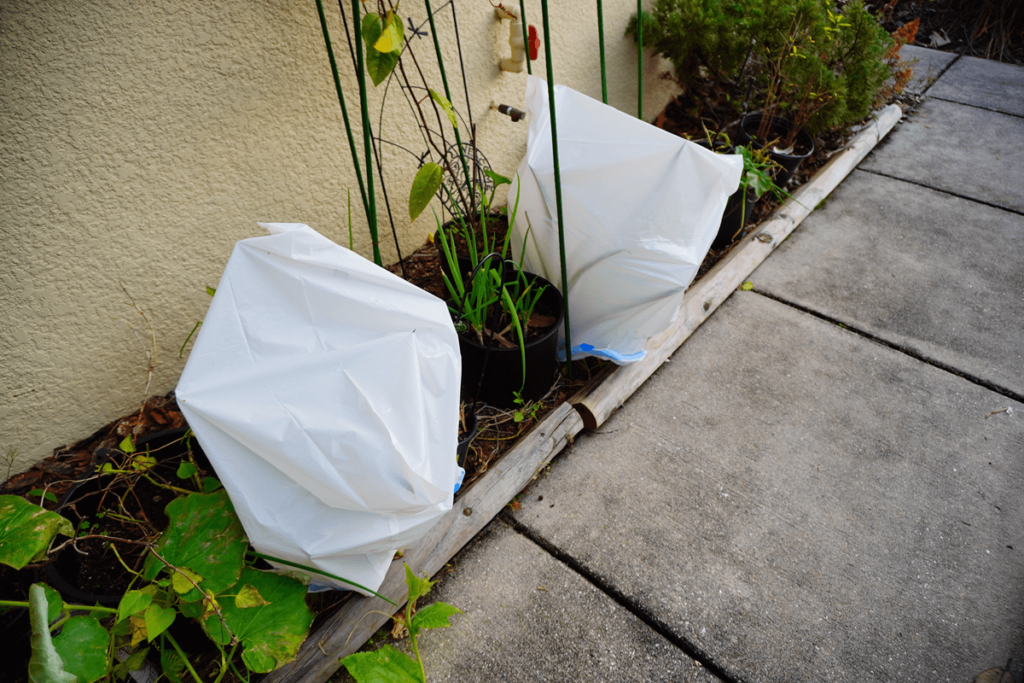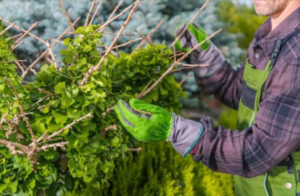
With the winter approaching, many of us are starting to think about how to best take care of our trees during the colder months. If you live in Zone 10A in Florida, average temperatures in winter tend to stay around 30-35 degrees. While snowfall and freezing are rare, these events still occur sometimes. Keep reading to explore some general best practices for winterizing trees in Florida including fertilization, irrigation, and coverage.
Three Types of Cold Damage
To begin with, it is useful for us to review the three main types of cold damage that threaten the health of our trees in winter.
Chilling Injury
This type of injury occurs when the temperatures drop more than a tree species can tolerate. For tropical species, these could be above freezing and occasionally as high as 50°F.
Radiational Freeze
Radiational cooling occurs on clear nights. Usually the ground traps sun warmth during the day and radiates it during the night. When there are clouds in the sky during the night, the clouds reflect the warmth back, helping the ground stay warmer. On clear nights, radiational cooling occurs as the warm air does not return to the ground. Radiational freeze is when the leaves of a tree suffer damage as their temperature gets lower than the air temperature.
Advective Freeze
Trees sustain this type of damage due to the movement of cold winds.
General Strategies for Winterizing Trees in Florida

There may be different types of trees in your backyard: hardwood, deciduous, evergreen, tree-like plants (some types of palms), and woody shrubs. While there are variations in how to best take care of each type throughout winter, there are common winterizing strategies that fit all of them.
Strategic Placement
Even before you plant any trees in your backyard, it is a great idea to map out their locations. Did you know that your backyard has its own microclimates? Lower areas tend to be colder. Also, cold fronts in Florida usually come from the northwest or west, pausing a risk of advective freeze. This means that the southern and eastern areas of your yard may be better suited for tropical trees such as palm trees, as your house would serve as a shield against the cold.
Other great tips to shield your tropical trees include using fences or cold hardy hedges on the north or northwest side. These can act as a buffer against cold winds in the winter.
Proper Nutrition
Trees usually go into dormancy during January and February, so it is best to not fertilize them in December as this may encourage new growth which is highly susceptible to cold damage. Yet, providing trees with enough nutrients before the cold season begins can help them deal with cold temperatures better. Healthy trees are better equipped to fight off diseases that may make them more vulnerable during winter.
Fertilization is especially important for palm trees. Nutrient-starved tissues are less cold-hardy. General guidance would be to use fertilizers where 100% of the N, K, and Mg is in slow-release form as Florida’s soil has a very low capacity to retain these elements in the root zone.
Sufficient Irrigation
The best practice is to water your trees before cold nights. Doing this in the morning helps ensure that the soil better absorbs the warmth from the sun. Yet, it is essential to not do too much irrigating. Wet soil may be as damaging for your trees as a dry one. In fact, wet soil encourages fungus growth and makes roots more susceptible to rot. Also, wet soil reduces oxygen in the soil and makes it hard for the root system to absorb water.
Warm Coverage
When you see a forecast predicting a cold night, you should consider covering your trees. The best materials to use are:
- Thick Quilt
- Blanket
- Frost Cloth
Please avoid using plastic as it takes the heat away from the tree or plant. To cover your trees, you should extend the cover all the way to the ground. Securing it with heavy objects all the way around the plant’s base can help protect the covering from strong winds. This will also help trap the soil’s warmth.
Pruning Tips
It is best not to do any pruning too early in the winter as pruning encourages new growth. Pruning should be done once the trees enter the dormancy stage. Also, foliage provides extra insulation for trees.
For hardwood trees, the best time to get some pruning work done is from December until early February. When it comes to evergreen trees, it is best to do pruning in January and early February. It is best to keep pruning to a minimum for woody shrubs.
If you have mangroves on your property, it is best to not trim them during the winter at all. Research shows that mangroves pruned in winter had a harder time recovering than those trimmed in spring. So, when the spring comes, our ISA-Certified arborists at Joshua Tree Inc. will be more than happy to get your mangroves in top-notch condition.
Recognizing and Dealing with Cold Damage
One sign of cold damage is a foliage burn. This is when leaves turn tan, brown, or black and become wilted. Another telltale sign is plant fungus that causes brown spots on leaves. Also, on woody plants, cold damage can manifest in the cambium layer under the bark of a branch or trunk appearing as black or brown.
To help your tree recover from cold damage, consider using a copper fungicide. Please, remember to not do any pruning and avoid fertilizing them to not encourage any new growth.
Luckily, freezes do not occur that often in Florida. We wish you success with winterizing your trees this winter. At Joshua Tree Inc., we proudly offer professional tree removal and pruning services in Florida. We hope you found our tips on how to winterize your trees in Florida useful. Contact us today if you need a helping hand with your trees.
